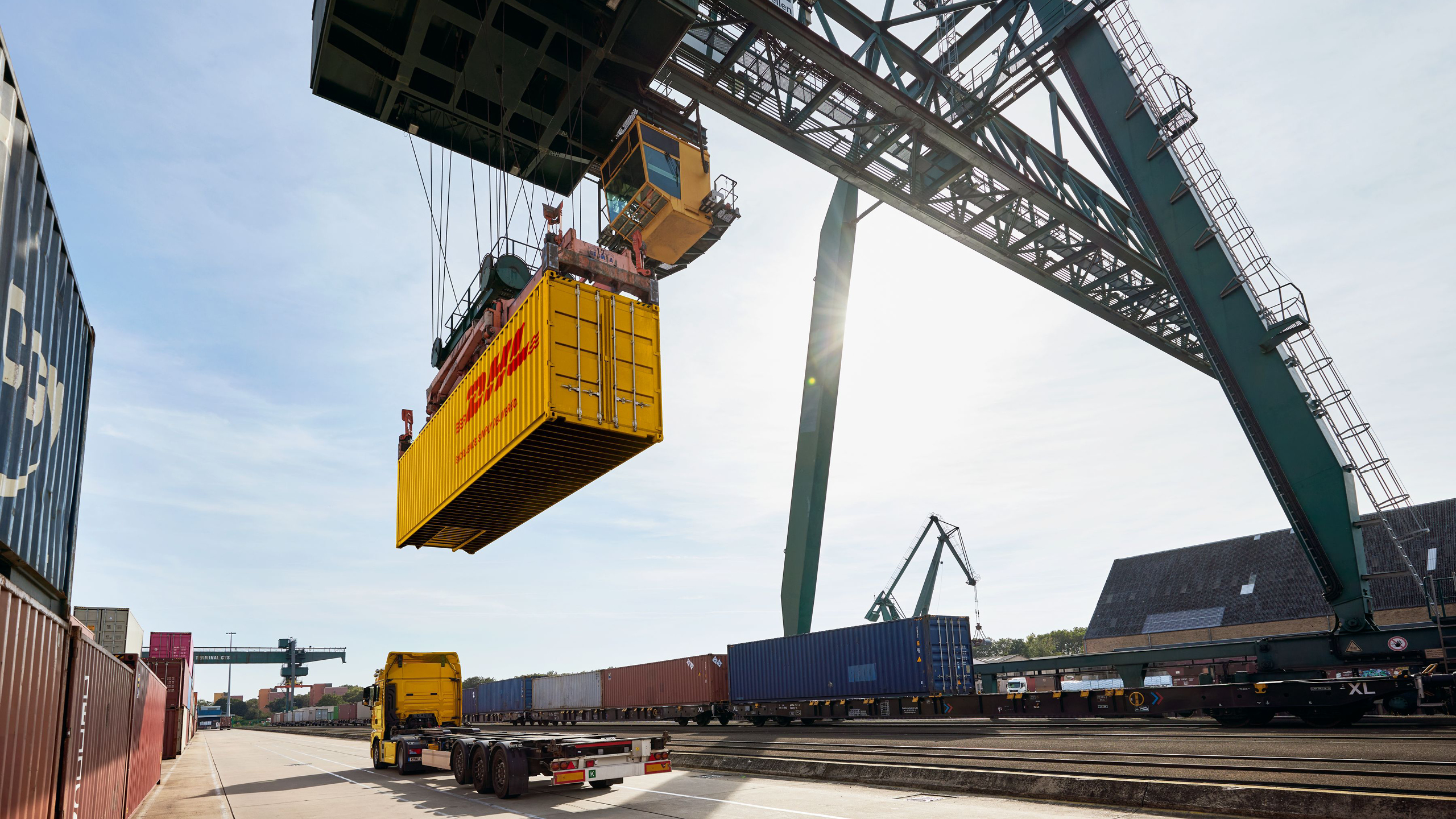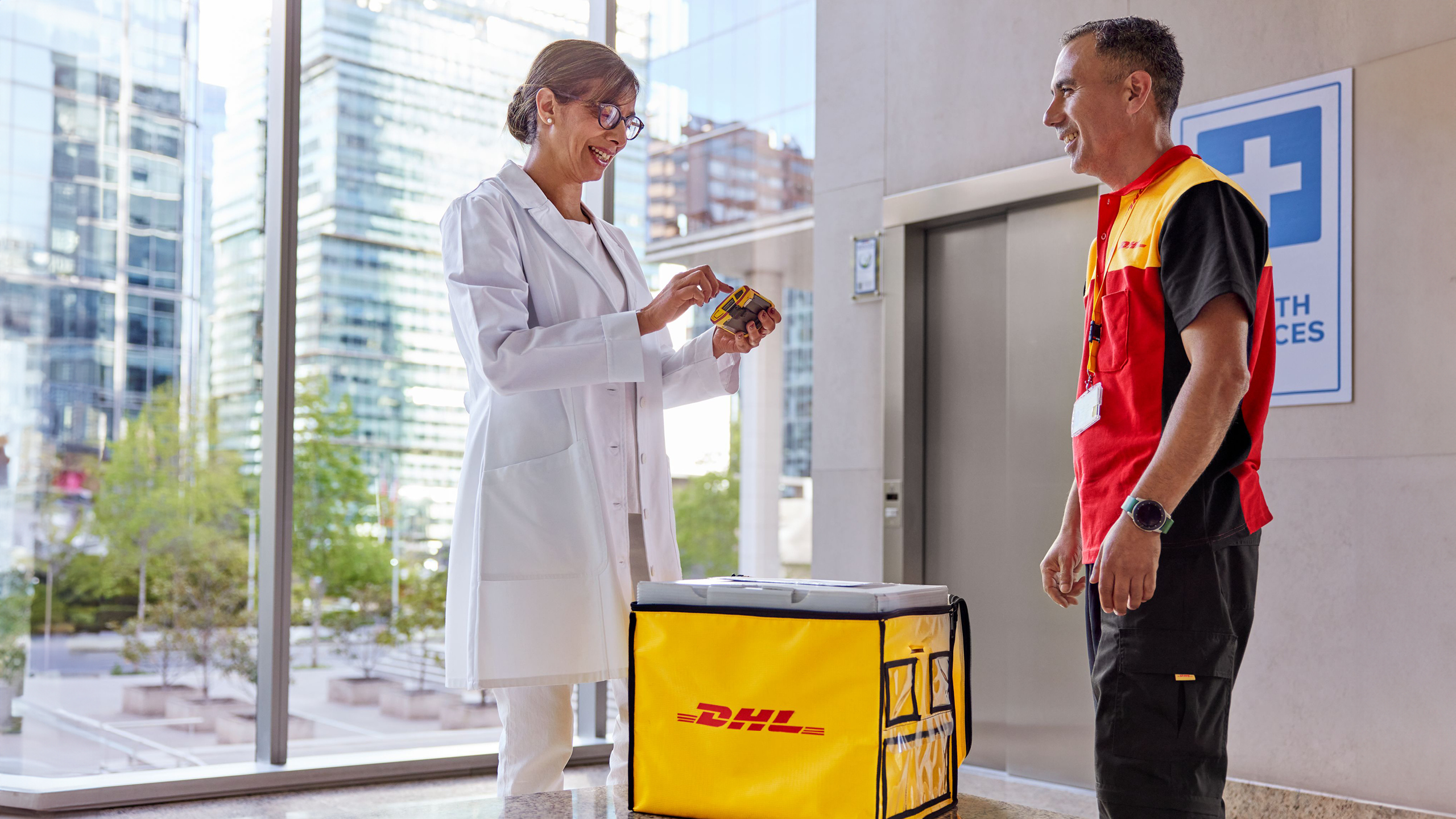
Intermodal transport means switching more than once between (inter) different types (modi) of transport when forwarding a good. The term intermodality in freight transport is also associated with uniform standards in modern logistics. In addition, there is multimodal transport and combined transport. Find out what each term refers to and what the benefits of intermodal solutions are.
What Is Intermodal Transport?
Intermodal transport is clearly defined in logistics. Although the term is often equated with combined transport, the two concepts are different.
Definition of Intermodal Transport
Intermodal transport is the movement of goods from an origin to a destination using two or more modes of transport. The decisive factor is that within the transport chain, the goods remain in one and the same load unit. This means that when changing the mode of transport, no goods are removed from the transport unit to be forwarded separately.
The loading units are usually swap bodies and containers. Piggyback transport, in which a truck is loaded in its entirety onto a freight train (rolling highway), or RORO (roll-on/roll-off) transport with ships, in which road and rail vehicles can drive in completely, are also possible links in an intermodal supply chain.
History of Intermodal Transport
Ever since goods have been transported, there have been various means of transportation to get them from their origin to their destination. Whether shiploads are loaded onto horse-drawn carriages or trucks – the principle is always the same. However, "intermodal" means more than just deploying different modes of transport. In transport logistics, the concept of intermodality is closely linked to the standardization of containers in the 1960s.
It was the introduction of ISO containers and other standardized transport units that made it possible to quickly transfer entire units from ship to freight train or from train to truck – and thus allow intermodal transport as we understand it today. In this way, supply chains can be diversified, and air freight, sea or inland waterway shipping, rail and road freight can be seamlessly combined.
Intermodal and Multimodal Transport
The difference between intermodal and multimodal transport relates to a minor but significant detail: the definition of multimodal transport does not consider the load unit. This means that when changing the mode of transport, the single packages may also be processed individually and not just the load unit in its entirety.
For example, when containers are opened in a port, airport, train station, or logistics center, and goods that were previously bundled in a single load unit are transferred to different road vehicles. So, the definition of intermodal transport is stricter than that of multimodal transport.
Intermodal Freight Transport in Europe: Combined Transport
Combined transport, as defined by the European Commission, is a subcategory of intermodal transport. It also involves the combination of two or more transport modes within the transport chain and here, too, the entire loading unit is being handled.
But the EU concept of combined transport has an additional, political dimension. With the directive on combined transport, the European Commission wants to support the European Green Deal by promoting the shift of freight transport from trucks to lower-emission carriers such as rail or inland waterway transport. For this reason, the main run in combined transport must be by rail or ship. For pre- and onward carriages trucks may be used but only on a distance as short as possible.

In concrete terms, this means that road freight transport must be limited to 150 kilometers of linear distance between the loading or unloading point and the nearest suitable railroad station, inland port, or seaport. In return, EU-compliant combined transport benefits from privileges. Depending on the country, vehicle taxes for trucks used in combined transport are either reduced or refunded by a lump sum.
An Example of Intermodal Transport in Everyday Logistics
Intermodality may work like this in logistics practice: Goods are loaded into ISO containers at a production site and carried by truck to the nearest seaport. Here, the containers are transferred to a ship for intercontinental maritime transport. At the destination harbor, the containers are transhipped onto a freight train. The final destination of the containers might be a distribution center without a rail connection. Thus, the train travels to a station close to the center. The last stage of the supply chain is again carried out by a truck.
This is an example of an intermodal transport with full container load (FCL). Intermodal transport is also possible as less than container load (LCL). In this case, the goods are transported separately to a logistics center, where they are consolidated in shared containers with LCL loads from other shippers. Strictly speaking, pre-carriage and onward carriage do not qualify as intermodal transport in this case, as they do not involve the transportation and handling of the entire loading unit.
Advantages of Intermodal Transport
In fact, it is not intermodal transport as such that has advantages and disadvantages. Rather, each individual mode of transport has specific pros and cons. We have already presented these in detail in a comparison of the types of freight in our blog.
Ships, for example, can hold the most cargo, but are slow. The exact opposite applies to aircraft. Road freight is the most flexible mode of transport – and the only one that enables door-to-door delivery. But compared to rail, road freight is responsible for higher pollutant emissions. In general, rail freight is currently the most sustainable transport mode. But it depends on the track network. This limits its range and makes rail less flexible than trucks.
Moreover, deciding to use intermodal transport is rarely a matter of weighing up the advantages and disadvantages, but rather a result of the given geographical or cargo-specific circumstances. Production facilities are not always near ports or railroad stations, which means that often road freight is indispensable for pre-carriage and onward carriage in the supply chain. On the other hand, ship or rail transportation may be required for most of the transport chain if there is a large transport volume.
Ideally, an intermodal transport solution combines the advantages of the individual transport modes to establish the most efficient and sustainable supply chain possible. For a more sustainable transport logistics, the proportion of environmentally friendly transport modes should be as high as practically feasible. Especially EU-compliant combined transport with a low share of trucks on short to medium distances brings ecological and social benefits. This reduces direct emissions and takes pressure off the public road infrastructure. However, due to limited track capacity, rail as the most eco-friendly means of transport is not always available as an intermodal carrier.
Intermodal transport can be disadvantageous if individual agreements have to be made for each transport mode. This involves a great deal of organizational effort and complex pricing. Experienced logistics service providers such as DHL Freight offer intermodal transportation solutions from a single source. This is not only convenient for our customers, but also offers full price transparency.
Intermodality Is Efficient and Sustainable with Smart Use
There is often no alternative to intermodal transport concepts, specifically for long distances. This makes it all the more important to organize intermodal transport in such a way that the positive potential of each individual carrier can be exploited in the best possible way. To make transport logistics not only more efficient but also more sustainable, the common goal of all players involved should be to successively increase the share of ecologically favorable modes of transport, and at the same time reduce emissions and environmental impact in all areas through innovative technology.
This is exactly what we at DHL Freight are doing as a pioneer in green logistics: getting your goods to their destination as quickly, safely, and sustainably as possible. On the one hand, we are reducing pollutant emissions in our own network by using more and more low-emission and long-term emission-free road vehicles. On the other hand, we are continuously expanding our intermodal concepts by including rail – so we can offer our customers efficient intermodal solutions for numerous transport needs.
DHL Freight Railnet
With this DHL Freight Railnet overview you can find out which rail and ferry connections are already available to you.


